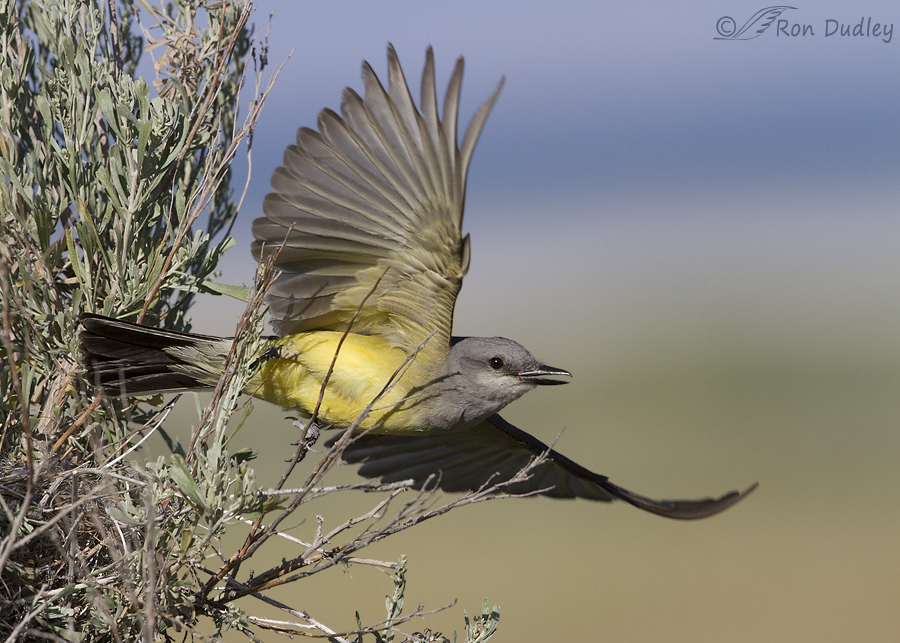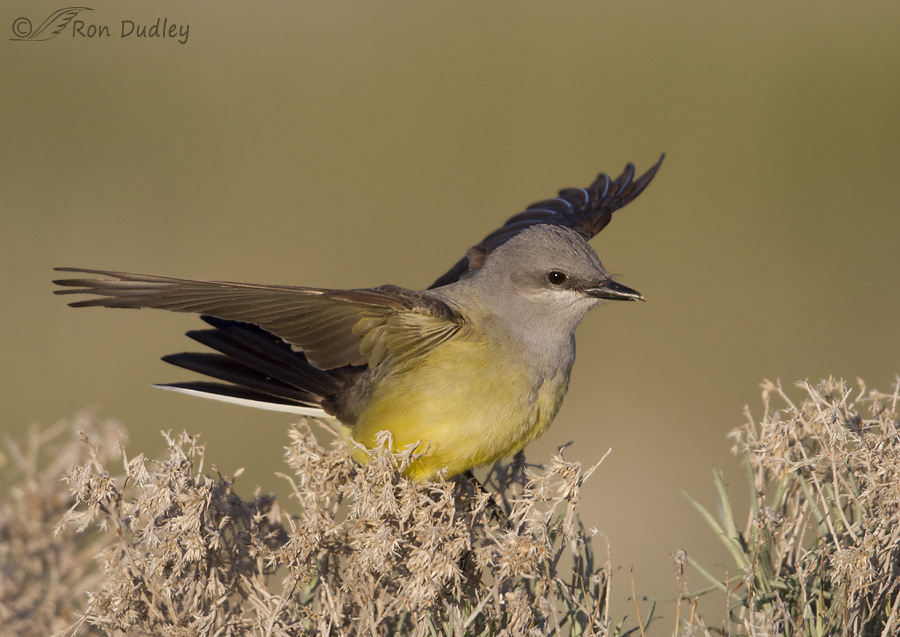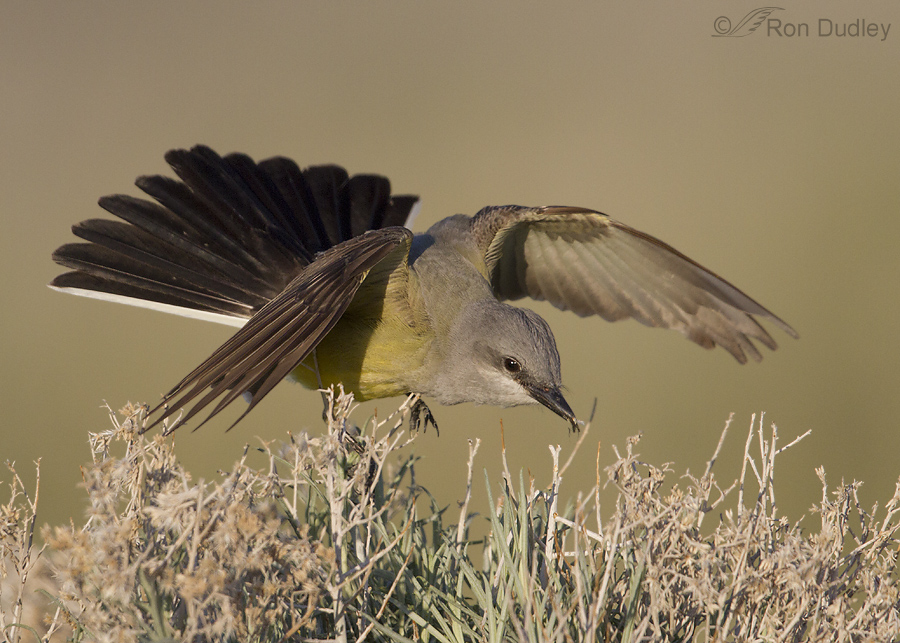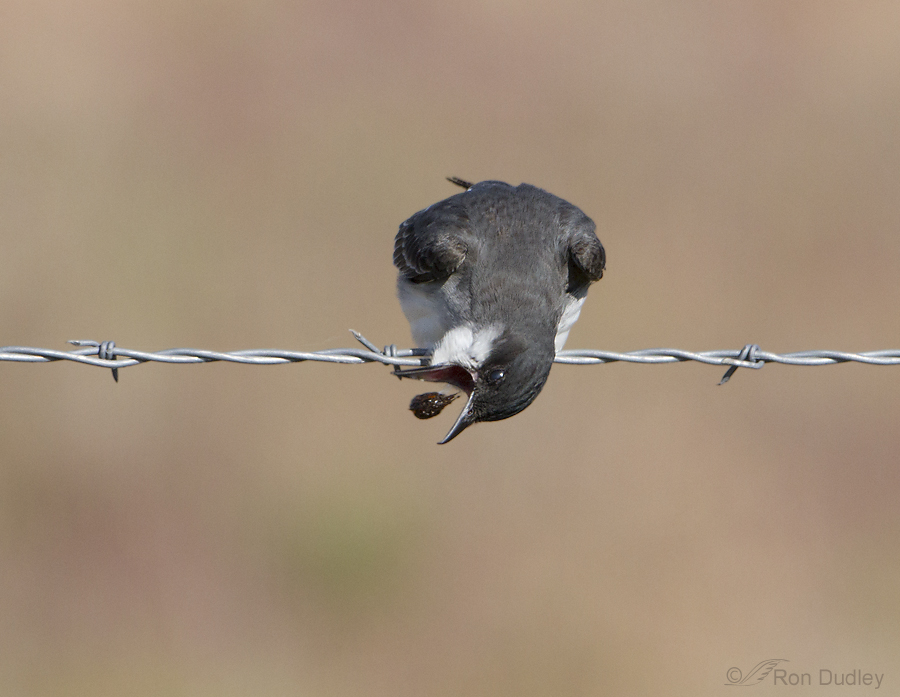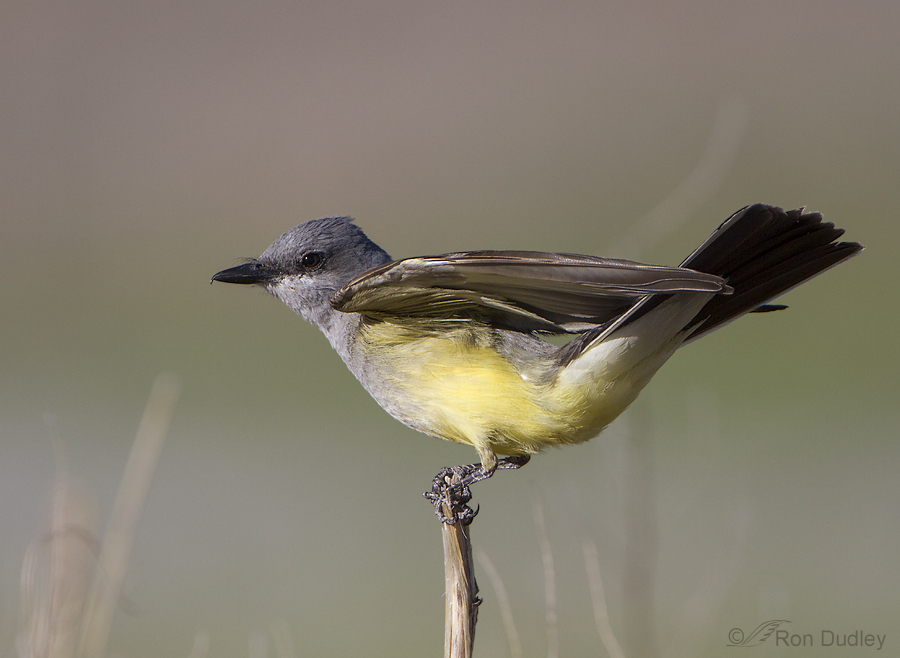Tag: tyrannus verticalus
Birds Using Bison Hair As Nesting Material
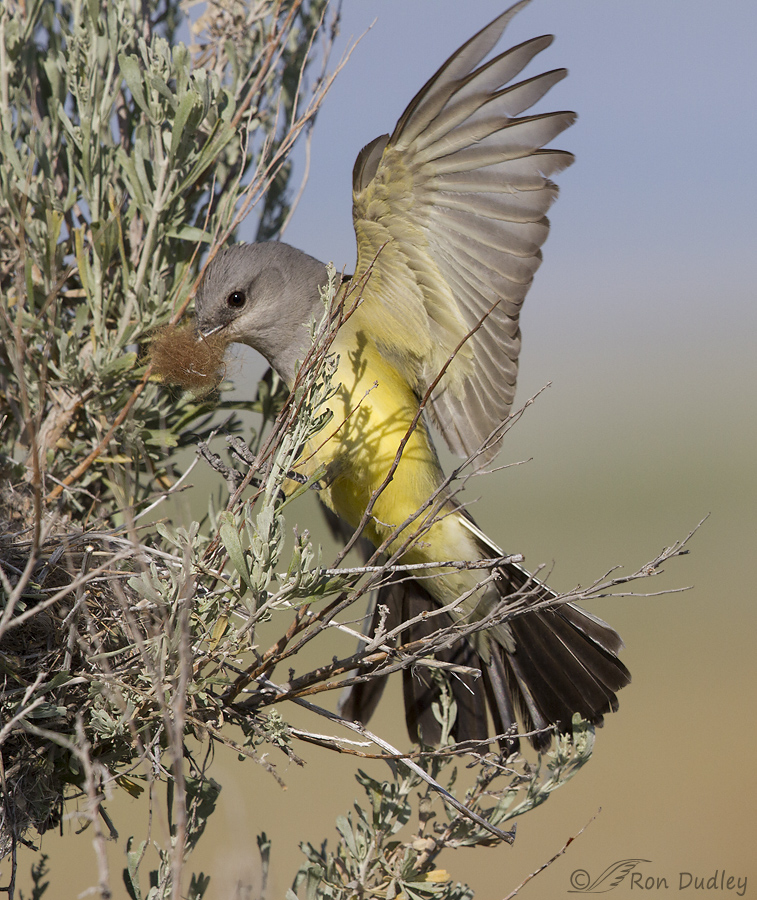
For millennia a variety of North American bird species used bison hair during nest construction but when the “buffalo” was brought to the brink of extinction by hunters in the late 1800’s that resource was essentially gone. Today there are relatively few places where bison hair is available to birds and Antelope Island is one of them.
Nest-building Western Kingbird
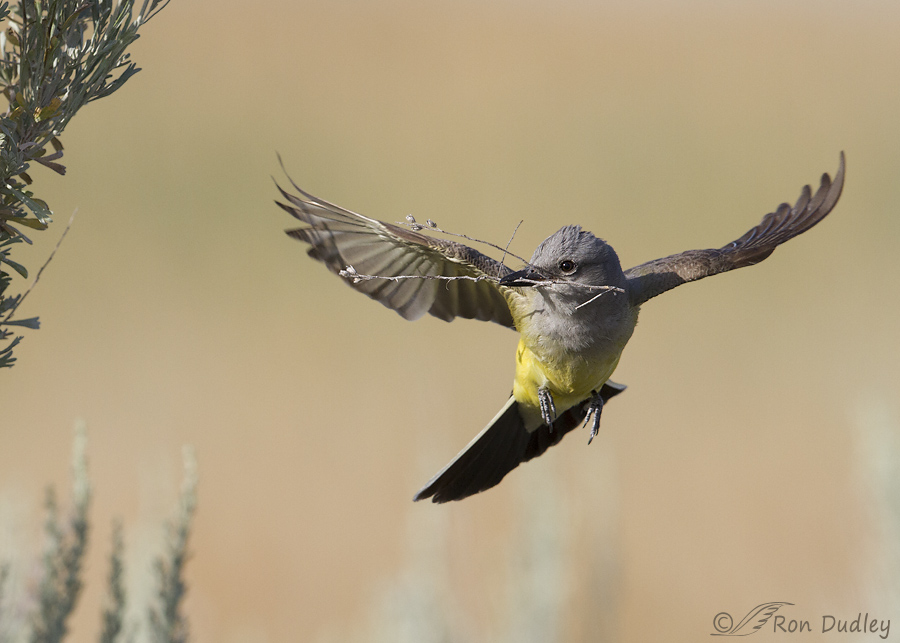
Yesterday morning we photographed an industrious female Western Kingbird as she worked at constructing her nest. In this species the sexes are similar but only the female builds the nest. The male hung around nearby as he watched over the laborious construction process and offered his mate encouragement (that was good of him don’t you think?).
Western Kingbird With A Serious Eye Problem
Western Kingbird Feeding Behavior
Eastern Kingbird Casting A Pellet
Western Kingbird Off Balance
At Long Last – The Red Crown Patch Of The Western Kingbird
Occasionally, even a mediocre shot can make my day. I’ve known about the red/orange crown patch of the Western Kingbird for some time now but until yesterday had never seen or photographed it. 1/1600, f/8, ISO 400, 500 f/4, 1.4 tc It normally lies concealed under the gray feathers on the top of the head and is rarely seen or photographed. Normally the crown patch is only revealed before or during an attack on another kingbird or a potential predator threatening its nest. 1/2500, f/5.6, ISO 500, 500 f/4 The most common aggressive pose toward other kingbirds is called the wing flutter, where the wings are extended and rapidly fluttered in small arcs. But typically the crown patch is not exposed during a wing flutter unless an actual attack on the other kingbird is imminent. 1/2500, f/5.6, ISO 640, 500 f/4 I’ve included this image and the next one to show how well the crown patch is concealed. Here, as this kingbird ejects and throws off a pellet, you have a good look at the top of the head with no suggestion of a red crown patch beneath the overlying crown plumage. 1/3200, f/6.3, ISO 500, 500 f/4, 1.4 tc And another kingbird, banking at takeoff, gives us a pretty good look at the top of the head with no hint of the patch. 1/3200, f/6.3, ISO 500, 500 f/4, 1.4 tc But yesterday a gull made the mistake of landing on a perch very close to this kingbirds nest and it’s…
Western Kingbird Wing Flutter
This morning we decided to get out of our rut a little bit (actually, I tend to like ruts) and look for birds somewhere new so we headed to the high country of Morgan County. We figured it would be a nice respite from the heat, and it was. We saw some beautiful country and quite a few birds, though most of them were a challenge to get close to. One thing really surprised me. I don’t believe I’ve ever seen such high concentrations of Black-headed Grosbeaks and Western Kingbirds anywhere. Both species were picking off bugs along the road and it was a delight to see so many of them. 1/2000, f/6.3, ISO 500, 500 f/4, 1.4 tc This Western Kingbird was performing the “wing flutter” that kingbirds are so well-known for. It’s an aggressive behavior that is usually directed at other kingbirds, as was the case here. I liked the pose and the way the Scrub Oak framed the bird and helped to break up the blue sky background. Ron
The Western Kingbird and the Beetle
This will be another behavioral post – yes I am fascinated by interesting behaviors, perhaps overly so… I found this Western Kingbird hunting from a barbed wire perch which is quite typical for the species. It was so focused on its prey that it let me get quite close so I was able to get better detail of the feeding behavior than I normally do. 1/500, f/8, ISO 400, 500 f/4, 1.4 tc The kingbird has spotted prey on the ground 1/1250, f/8, ISO 400, 500 f/4, 1.4 tc so it flew down to retrieve it. In this case it happened to be a beetle. You can see it clinging upside down to the darker diagonal twig just in front of the bird. 1/1250, f/8, ISO 400, 500 f/4, 1.4 tc Here’s a highly cropped version of the previous image to show the beetle better. 1/1250, f/8, ISO 400, 500 f/4, 1.4 tc The bird grabbed the beetle but as you can see it had reached “through” the twig to get it 1/1250, f/8, ISO 400, 500 f/4, 1.4 tc so it got more than it bargained for. The end of the twig broke off and wedged between the beetles abdomen and the upper mandible. 1/1000, f/8, ISO 400, 500 f/4, 1.4 tc So it flew back to its wire perch and tried to figure out what to do about the dilemma. It actually spent about 15 seconds just sitting there and staring at what was in its…
Western Kingbirds
Yesterday was a slow day on the island, though we did see our first Western Kingbird of the year (I should say that Mia saw it as I missed it – one of the disadvantages of being the driver…). The sighting got me to thinking about these aggressive tyrant flycatchers and reminded me of how much I’ve missed them these last few months so I decided to devote a post to them. They’re called “kingbirds” because of their belligerent behavior and fearless nature. Kingbirds are very aggressive toward other birds and it’s not unusual to see them attacking almost any species – including hawks and American Kestrels. They’re extremely agile in flight and can get away with such seemingly foolish behaviors. 1/800, f/7.1, ISO 500, 500 f/4, 1.4 tc In this shot you can see most if the important field marks – pale gray head and breast, darker mask through the eyes, underparts yellow, tail black with white edges and black bill. The sexes are similar. Most folks are unaware that the species has a small orange-red patch on the top of the head but it is nearly always hidden except while performing certain behaviors. 1/3200, f/6.3, ISO 500, 500 f/4, 1.4 tc These birds are almost unknown to walk anywhere – virtually all locomotion is by flight. Typically they hunt from elevated perches so they flit from perch to perch looking for insects mostly. When I’m lucky I find them on natural perches like this dried thistle… 1/1250, f/6.3, ISO 640, 500 f/4,…


